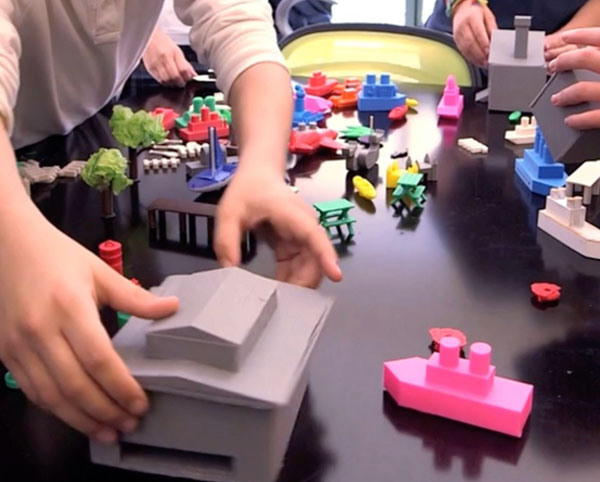3D Printing for Grades K-8
 Stratasys 3D Printers are used by more schools, colleges and universities than any other brand. Partner with us to get the support you need to focus on learning, not logistics.
Stratasys 3D Printers are used by more schools, colleges and universities than any other brand. Partner with us to get the support you need to focus on learning, not logistics.
Why Stratasys 3D Printing Solutions?
Challenge: Maintaining Student Engagement
When students are engaged, they are better able to discover their talents and develop the mental resources they need to think critically. But maintaining engagement can be a challenge, especially in middle school when both data and teacher experience point to a decline in student motivation.
Impact: Promoting Student Achievement
Engagement is a well-known predictor of academic achievement. Students who stay engaged are better prepared for college and have greater confidence to pursue challenging majors like those in STEAM fields. Still, some strategies to boost achievement, like heightened standards and high-stakes testing, overlook the role engagement plays, and can further discourage low-achieving students.
Solution: Practicing Active Learning
Active-learning practices — those that compel student participation — show a strong impact on performance for students of all backgrounds and achievement levels. That’s why educators increasingly embrace hands-on strategies like Project-Based Learning to activate curiosity, creativity and engagement in the classroom.
What’s possible with 3D printing?
Stratasys 3D Printers enable students to apply design thinking which builds excitement and momentum behind classroom projects.
3D printers also can inspire students with the realization that their ideas can be transformed into marketable products.
- Foster pride by helping students discover their talents as they draw on a variety of skills to navigate the design process.
- Develop persistence by letting students solve a design problem through multiple iterations.
Find creative ways to satisfy standards.
- Explore names, shapes, numbers and units of measurement in 3D while helping younger students develop their spatial reasoning.
- Let older students experience the unseen world by 3D printing sound waves, magnetic fields, cell structures, viruses and molecules.
- Travel beyond the classroom with 3D printed landforms, buildings, monuments, artifacts, or fictional places and things.
More Resources
- Stratasys 3D Printers: Learn more about Stratays, The 3D Printing Solutions Company
- FDM 3D Printers: 3D print strong, durable models with real production-grade thermoplastics.
- PolyJet 3D Printers: 3D print detailed models with ultra-fine layer resolution and smooth surfaces.
Ready to bring the latest 3D printing technology to your classroom?
Contact us to get exclusive discounts and purchasing options with our education packages.



